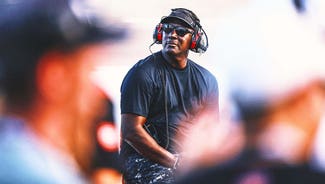
Racing hurt is a tradition in NASCAR
As Dale Earnhardt sat on the pit wall after climbing from his car during the 1996 Brickyard 400, he choked back a sob and tears welled up in his eyes.
And it wasn’t the incredible pain from broken bones and a host of other injuries that hurt the most.
It was climbing from his race car in the middle of a race and giving way to relief driver Mike Skinner after suffering a broken sternum, a broken collarbone and a bruised pelvis in a crash at Talladega a week earlier.
“Dadgum, it was hard to get out of that car,” Earnhardt said, his voice choked with emotion. “This is my life right there. I just hate to get out of that race car.”
For Earnhardt, one of the toughest men ever to drive a stock car, climbing out of his car during a race was much harder than enduring the pain of his terrible injuries.
So hard, in fact, that he insisted on racing again the next week, and produced one of the most incredible feats of his career. Despite intense pain from his upper-body injuries, Earnhardt won the pole and finished sixth at Watkins Glen International, muscling his car around the winding road course.
He’s not the only NASCAR star that has refused to give up his car and miss a race despite painful injuries.
Denny Hamlin is the latest driver planning to attempt the feat. Hamlin tore the anterior cruciate ligament in his left knee playing basketball last week, but doesn’t plan to miss any of the 2010 season.
Despite an injury that sidelines many football players for six months or more, Hamlin says he doesn’t plan to have surgery until after the 2010 season and expects to drive throughout the 36-race schedule.
Big deal? Surprising?
Not if you are a NASCAR driver.
Most drivers are as unaffected by injury as they are by frightening crashes. They are conditioned to climb back into their cars, no matter what.
“Drivers look at it differently from the average guy,” says Richard Petty, who suffered numerous injuries during his long career but rarely missed a race. “Most don’t blink an eye. It’s just part of the territory. You just go on with it.”
Numerous drivers over the years have even driven with head injuries, refusing to disclose their conditions to NASCAR and continuing to climb behind the wheel.
Darrell Waltrip and Buddy Baker both drove races they don’t remember in the 1980s. Baker, in fact, had to have emergency brain surgery a few days after he finally decided to climb out of his car because of dizziness and blurred vision.
Until 1998, when Ricky Craven voluntarily stepped out of his Hendrick Motorsports car with post-concussion syndrome, it was fairly common for drivers to continue racing with sometimes severe concussions.
Broken bones? Drivers rarely give a second thought to climbing out of the car unless they have to.
Earnhardt wasn’t the only driver to race with broken bones in 1996.
Terry Labonte broke his left wrist in a crash during practice at Phoenix International Raceway later that same year. Though his injury wasn’t as serious — nor as painful — it was much more critical.
Labonte was leading the points standings at the time and was locked in a close battle with teammate Jeff Gordon with just two races remaining.
Labonte drove the final two races with a splint and cast on his wrist, finishing third and fifth to beat Gordon for the title.
“There was no way I was climbing out of that car with a championship on the line,” Labonte said.
While Labonte was called “The Iceman” for his calm and cool demeanor, Ricky Rudd was NASCAR’s “Ironman,” making a record 788 consecutive starts.
And he did it despite numerous injuries.
After a violent crash in the 1984 Busch Clash, Rudd was so beaten and battered he had to use duct tape to tape his eyelids open during the Daytona 500 the next week. He ran the race despite a concussion.
“It was one of those deals where you do what you have to do,” Rudd said. “I just had a golden opportunity in front of me to drive for Bud Moore in a legendary operation. And here I was hurt. I guess I was too stubborn to turn that steering wheel to somebody else.”
Fourteen years later, Rudd proved his toughness again. He won the fall race at Martinsville Speedway in 1998 despite suffering second-degree burns on his back and buttocks when the cooling system inside his car broke and his crew accidentally poured scalding-hot water down his back.
Rudd was in such excruciating pain that he had to be treated by medical personnel in Victory Lane and then taken to the infield care center for more treatment before he could celebrate the victory and meet with the media.
It is such stories that inspire modern stars like Hamlin and Carl Edwards to keep racing through injury and illness.
Hamlin raced in 2006 with 19 stitches after cutting his hand on the team hauler.
Edwards broke his thumb in a Late Model race in 2007, but kept on driving his Nationwide and Sprint Cup car, winning nine Cup races and nearly catching champion Jimmie Johnson in the Chase.
Last year, he broke his left foot chasing a Frisbee, but never missed a race.
“Mental toughness to me is a picture of Ricky Rudd with his eyelids taped open,” Edwards said last year. “This is nothing. We’re going to race no matter what.”

